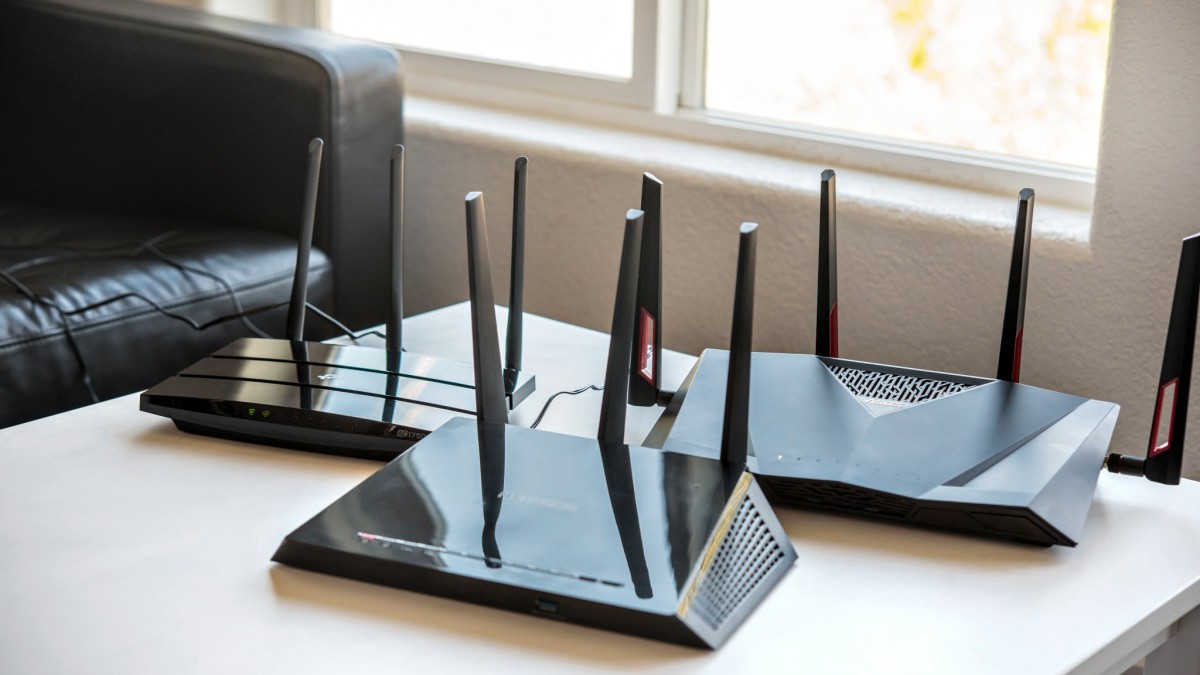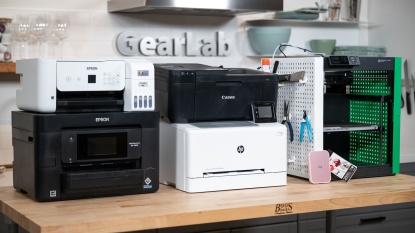Looking to take your internet game to the next level? After looking at the best WiFi routers on the market, we bought the top options and tested them side-by-side to find out which WiFi router is truly worthy of an award. Along the way, we compiled this guide to explain what they do, what to look for when shopping for a new product, and help you find the perfect WiFi router for your home or office.
What Does a WiFi Router Do?
Usually, we would begin by making a case for why you actually would want one of these products in the first place. However, in the case of WiFi routers, most people in this day and age find them a necessity. Currently, you may be looking at updating an older model or are tired of renting one from your internet service provider and are finally looking to buy your own. While you may have been using a router for years, you may not know what they do — thinking of them as "Magic Internet Boxes" — so we will cover their basic functions first.
Your internet service provider, or "ISP," will usually provide a modem, or you can use your own. This modem will connect to the lines coming into your house and have a handful of ethernet ports on the back. If this modem is in a convenient place, you could connect your computer directly to it through a cable and get on the internet. However, as the number of devices that can connect to the internet in each household continues to skyrocket, it is almost essential to have a wireless network that you can connect to. This point is where your WiFi router comes in. You connect your router to your modem through an ethernet cable, and your router can then broadcast a secure WiFi network that your various devices can connect to. Now that we understand how WiFi routers work, let's look at the first step in choosing a new router.
Step 1: Will a New WiFi Router Make Your Internet Faster?
While a newer, more modern router can have a host of definite benefits, such as being overall more secure, increasing your internet speed is not one of them. First and foremost, your internet speed is determined by your ISP, and usually depends on the plan you pay for. Unfortunately, your ISP options may be limited, and the ability to pay for a faster plan may not exist — true in many rural areas. If this is the case, a better router won't make much difference, as the slowdown is upstream of the router, and there isn't much you can do.
However, if this isn't the case, then you should look at your current router — specifically, where you have it set up. For example, if you have it set up at the end of your house in a metal cabinet, you have found the bulk of your problems there. Moving your existing router to a more central location, less obstructed location, or closer to your devices can positively impact throughput and minimize interference.
Suppose you can't easily move your router, then you should consider upgrading to one that has an increased range. If you have tried moving your router to no avail or if your router is a few years old, it's probably time to look at getting a new model.
Step 2: What's Your Budget?
After deciding if you need a new router, the next thing to consider is to determine what your budget is. A quick internet search will reveal that these products range in price from $50 to $500, and it might not be immediately apparent what the difference is. A small home with only a few devices, such as a laptop, smartphone, and a media streaming device doesn't need a $500 router and wouldn't notice any performance increase from $80-$100 routers to a $450 one. Additionally, spending a ton of money on a premium router may be a literal waste if you can connect your devices over a wired connection.
A wired connection will always be faster and more reliable than WiFi, meaning that a $5 ethernet cord connecting your media streaming box to a lower-end router or directly to the modem is always preferable to buying a high-end router to handle the bandwidth. However, if you have a large home with tons of devices that have to be connected wirelessly and multiple users are utilizing high-bandwidth applications, like media streaming or video conferencing, you don't have an option besides spending a few hundred dollars on a router. It all comes down to how much you are willing to spend on a router and how frustrating you find slow internet — just be warned, skimping out now could lead to a lot of frustration later.
Step 3: MU-MIMO? 802.11n? 802.11ac? 802.11ad? What Do These All Mean?
As you begin to search for a new top-tier WiFi router, you may find a whole host of phrases that you may not be familiar with when it comes to describing the features of these products. First, we would advise that you get a router that supports MU-MIMO. MU-MIMO, or "Multi-User- Multiple-Input, Multiple-Output", refers to the ability for a router to communicate with multiple devices simultaneously, greatly decreasing load time on devices when there are multiple internet-connected things on the network.
We would also recommend looking for a router with QoS, or "Quality of Service." This feature is very handy if multiple devices are on a network, allowing you to prioritize bandwidth by application or device. For example, you could set a work computer above a family media streaming device above a teen's smartphone in terms of importance, or you could set media streaming above social media. This feature is one of the best ways to ensure you get the network speed where you want it if many devices are on the network. Unfortunately, these features are usually on more expensive routers, so you may need to forgo them if you are shopping on a tight budget. However, these are worth it in our opinion, if it's within your budget.
The 802.11 designations on a router refer to the standard of wireless LAN technology established by the IEEE (Institute for Electrical and Electronics Engineers). These standards are, in a nutshell, why WiFi works, and there is plenty of technical literature available online if you are interested in this further. However, it is the suffix to this designation that you should care about when shopping for a new router, as this informs you of some of the capabilities of each router. We recommend looking for at least an 802.11ac Wave 2 or an 802.11 ad router, as these routers should support MU-MIMO; other routers, such as 802.11n, only support MIMO. While it can send and receive information from a single device simultaneously, it can't do this for multiple devices, dragging down performance on device-laden networks.
Step 4: What Features Do You Need?
More and more, we found features to be an important differentiator with these products, as the throughput of these products is increasing so quickly that it usually ends up that your ISP is the limiting factor in your bandwidth. One of the first features you should consider is the ability to implement parental controls. The more sophisticated routers offer a variety of ways to filter content and access, allowing you to block certain genres of undesirable content for kids and teens on the whole network or cut off network access by device — a handy way to implement rules like no smartphone use at dinner or after bedtime. However, this won't block cellular data on a device, as the device is connecting to a different network.
If parental controls aren't something that you are interested in, then there are a few other features that we found quite useful. The first is the ability to reset the router remotely. Being able to reset the router through a smartphone app or browser interface easily allows you to hide the router in a discreet location and not worry about having to access it every time you experience connectivity issues. We also found the ability to dim the indicator lights surprisingly useful, as there was no longer an annoying flicker of lights visible when watching a movie at night in the same room as the router.
We also found the ability to host a guest network very handy. A guest network can be easily turned on and off and set to be unsecured or with a different — and potentially easier to dictate but less secure — password. This feature is usually used when you have company over. You either don't want to grant them access to your primary home network or, more commonly, spend the time telling every one of your guests a complicated alphanumeric network key with special characters — which you should be using for your private home WiFi network.
Conclusion
Hopefully, this guide has helped you select the best WiFi router that will match your needs and keep buffering and interruptions to a minimum. For more information on how we tested and scored these products, check out the comprehensive side-by-side review or our detailed How We Test article for a full breakdown of our testing procedures and methodologies.















